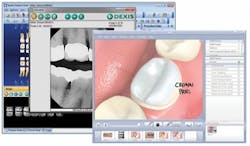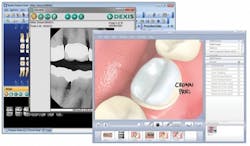Personalizing the practice with more digital tools
Justin Moody, DDS
For more on this topic, go to www.dentaleconomics.com and search using the following key words: personalize the practice, technology, patient communication, Justin Moody, DDS.
In last month’s column, I offered my take on a pair of great technologies and how they helped me juggle my priorities in the dental office. This month I want to focus on technology that makes patients feel special, and that’s what keeps them coming back. In my office, all of this is achieved with the connection between practice management, digital radiography, and case presentation systems that seamlessly interact to make tasks easier for my team, my patients, and me.
A very innovative part of this trio is case presentation software. My program (Guru®) has built-in patient education modules with 200 prepared animations. That’s a great help in teaching patients about dental procedures and conditions, but what sets this program apart is that the dentist can integrate a patient’s images into the educational presentation.
It is always good to have technology, but it’s great to have technology that can be personalized for each patient with very little effort. Especially with implant planning, one of the focuses of my practice, the program shows patients that I am committed to doing this procedure right, and that my equipment is state-of-the-art.
The presentation with Guru is not the “canned” type they may have seen at another practice. I can start and stop the presentation if a patient wants to ask questions. If they want to take it home, I can email it to them and they can access the information online with a secure log-in and password.
How could I personalize these presentations without the benefit of digital radiography? I certainly could not tape a piece of film on my monitor and hope for the best. With the click of a button, I can import the patient’s digital images from my software (DEXIS®) right into the presentation, and arrange the images to best identify the issues.
As I have said before, the clarity of the images and my ability to enhance them gives my patients and me insights that could not be achieved with traditional film X-rays.
That in itself is an achievement, but the integration of case presentation has a professionalism that is a valuable tool for patient understanding. When the program’s images and animations are integrated for better understanding, patients not only know what is happening in their mouths, but they feel compelled to do something about it. When patients see what I see, they are empowered to ask questions, and they gain that feeling of co-diagnosis that everyone talks about.
Also last month, I discussed a practice management component that sends medical records electronically. That really helps the office workflow, but there’s another aspect that we are now implementing with our Dentrix® program. With the online records and payment system, patients will have all of the aspects of their treatment at their fingertips.
They will be able to log on to see their present and future treatment options and view their Guru presentations and digital images.
This program even allows them to view information about possible future recommended procedures and payment history, and make payments online. All of this information is neatly packaged in color-coded folders that patients just click on to open.
Patient communication has come a long way since dentists had to hold a small X-ray up to the light, or sit a patient in front of a TV set and pop in a boring video. With combined technologies, patients think the experience is all about them, but the dentist knows it is also about organization, ideas, and a continuum of dental care that will undoubtedly contribute to the economics of the modern dental practice.
Dr. Justin Moody is a diplomate with the American Board of Oral Implantology/Implant Dentistry and the International Congress of Oral Implantologists, and an associate fellow with the American Academy of Implant Dentistry. He also holds mastership and fellow status at the Misch International Implant Institute. He can be reached at [email protected].

